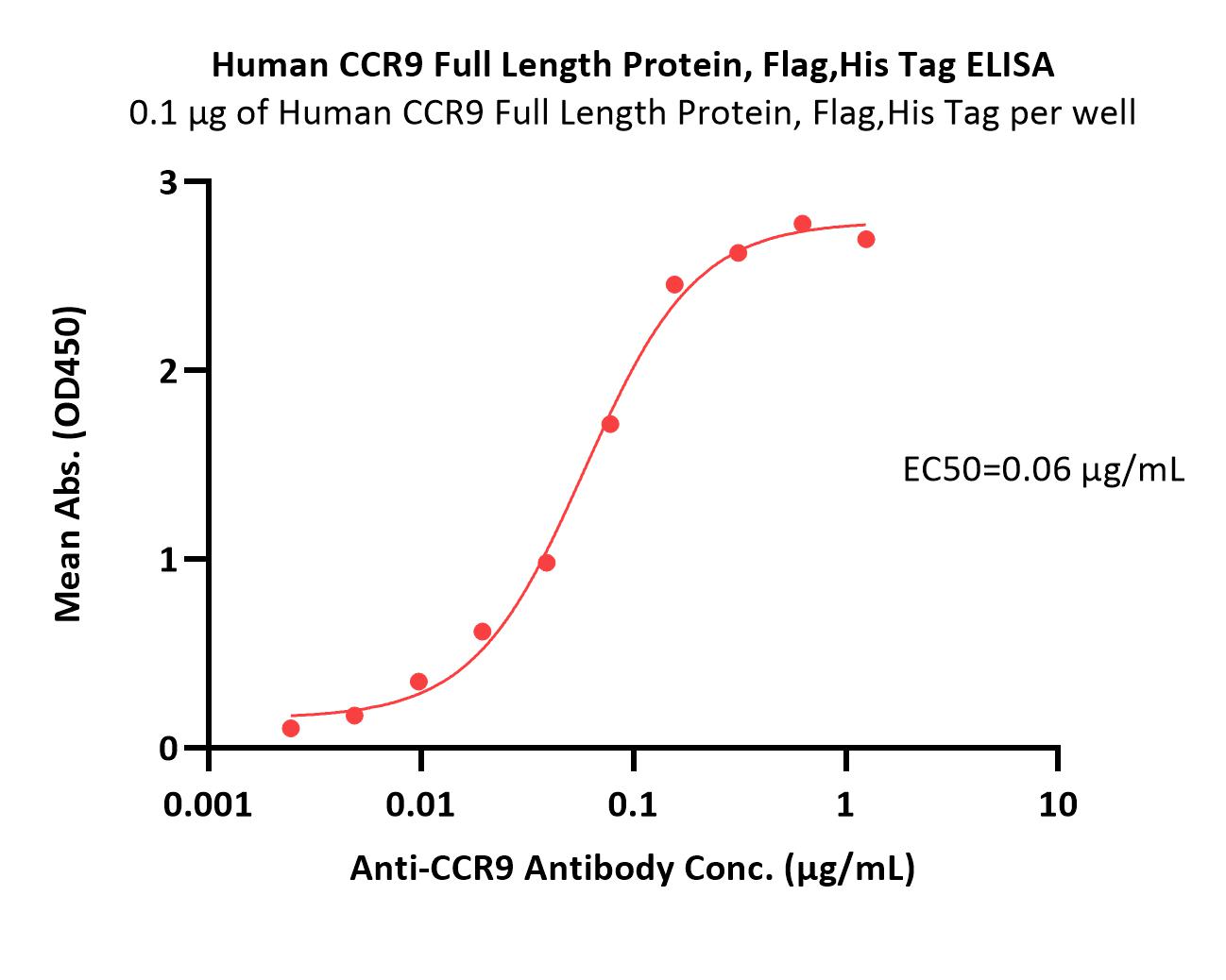分子别名(Synonym)
C-C motif chemokine receptor 9,GPR28,CDw199,GPR-9-6,CC-CKR-9
表达区间及表达系统(Source)
Human CCR9 Full Length Protein, Flag,His Tag (CC9-H52D3) is expressed from human 293 cells (HEK293). It contains AA Thr 2 - Leu 369 (Accession # P51686-1).
Predicted N-terminus: Asp
Request for sequence
蛋白结构(Molecular Characterization)

This protein carries flag tag at the N-terminus and polyhistidine tag at the C-terminus.
The protein has a calculated MW of 44.9 kDa.
内毒素(Endotoxin)
Less than 1.0 EU per μg by the LAL method.
纯度(Purity)
>90% as determined by SDS-PAGE.
制剂(Formulation)
This product is not suitable for cell based experiments due to cytotoxicity of DDM.
DDM and CHS are INDISPENSABLE to keep membrane protein soluble and active, under no circumastance should you remove DDM and CHS.
DDM/CHS buffer (DC-11) is sold separately and not included in protein, and please contact us if you need the buffer.
If glycerol is not compatible to your application, remove glycerol just before immediate experiment, and NEVER store glycerol-free protein solution.
Supplied as 0.2 μm filtered solution in 50 mM HEPES, 150 mM NaCl, DDM, CHS, pH7.5 with glycerol as protectant.
Contact us for customized product form or formulation.
运输(Shipping)
This product is supplied and shipped with dry ice, please inquire the shipping cost.
存储(Storage)
Please avoid repeated freeze-thaw cycles.
This product is stable after storage at:
- The product MUST be stored at -70°C or lower upon receipt;
- -70°C for 3 months under sterile conditions.
质量管理控制体系(QMS)
活性(Bioactivity)-ELISA

Immobilized Human CCR9 Full Length Protein, Flag,His Tag (Cat. No. CC9-H52D3) at 1 μg/mL (100 μL/well) can bind Anti-CCR9 Antibody with a linear range of 0.002-0.156 μg/mL (QC tested).
Protocol
背景(Background)
The protein encoded by this gene is a G protein-coupled receptor with seven transmembrane domains that belongs to the beta chemokine receptor family. Chemokines and their receptors are key regulators of thymocyte migration and maturation in normal and inflammation conditions. This gene is differentially expressed in T lymphocytes of the small intestine and colon, and its interaction with chemokine 25 contributes to intestinal intra-epithelial lymphocyte homing to the small intestine. This suggests a role for this gene in directing immune responses to different segments of the gastrointestinal tract. This gene and its exclusive ligand, chemokine 25, are overexpressed in a variety of malignant tumors and are closely associated with tumor proliferation, apoptosis, invasion, migration and drug resistance. This gene maps to the chemokine receptor gene cluster. Multiple transcript variants encoding different isoforms have been found for this gene.























































 膜杰作
膜杰作 Star Staining
Star Staining










 Loading ...
Loading ...




